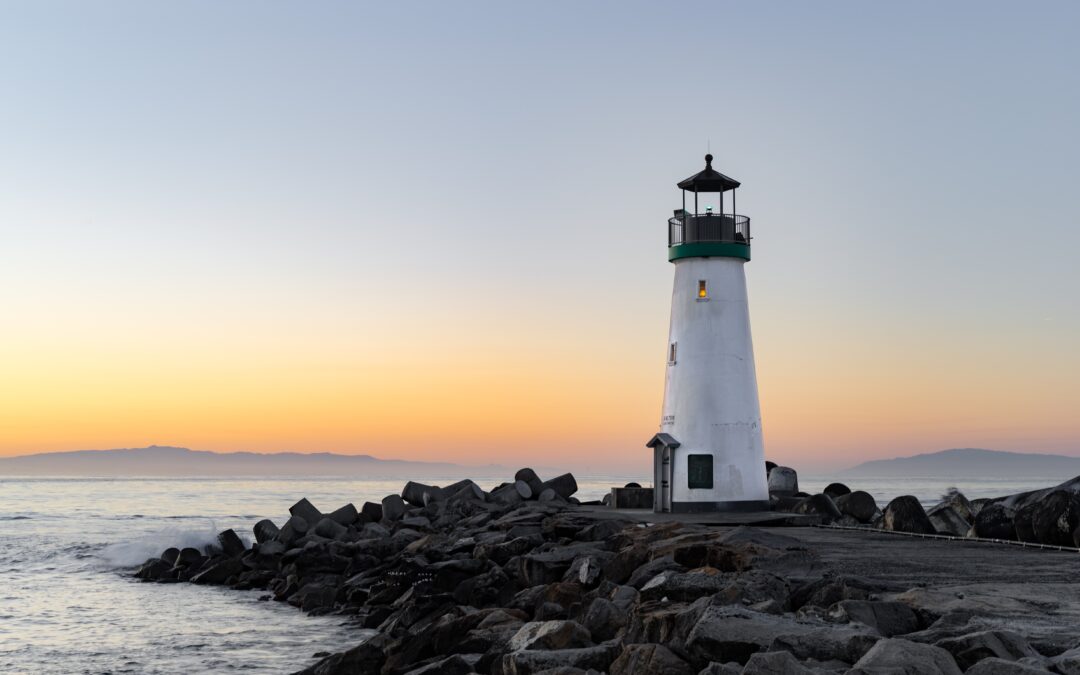The Lighthouse of Alexandria, sometimes called the Pharos of Alexandria was a lighthouse built by the Ptolemaic Kingdom of Ancient Egypt, during the reign of Ptolemy II Philadelphus (280–247 BC).[2] It has been estimated to have been at least 100 metres (330 ft) in overall height.[3] One of the Seven Wonders of the Ancient World, for many centuries it was one of the tallest man-made structures in the world.
The lighthouse was severely damaged by three earthquakes between 956 and 1323 AD and became an abandoned ruin. It was the third-longest surviving ancient wonder, after the Mausoleum at Halicarnassus and the extant Great Pyramid of Giza, surviving in part until 1480, when the last of its remnant stones were used to build the Citadel of Qaitbay on the site.
In 1994, a team of French archaeologists dove into the water of Alexandria’s Eastern Harbour and discovered some remains of the lighthouse on the sea floor.[4] In 2016 the Ministry of State of Antiquities in Egypt had plans to turn submerged ruins of ancient Alexandria, including those of the Pharos, into an underwater museum.[5]
Origin
Pharos was a small island located on the western edge of the Nile Delta. In 332 BC Alexander the Great founded the city of Alexandria on an isthmus opposite Pharos. Alexandria and Pharos were later connected by a mole[6] spanning more than 1,200 metres (0.75 miles), which was called the Heptastadion (“seven stadia”—a stadion was a Greek unit of length measuring approximately 180 m). The etymology of “Pharos” is uncertain. The word became generalized in modern Greek (φάρος ‘fáros’), and was loaned into Italian (‘faro’) and French (‘phare’).
The east side of the mole became the Great Harbour, now an open bay; on the west side lay the port of Eunostos, with its inner basin Kibotos now vastly enlarged to form the modern harbour. Today’s city development lying between the present Grand Square and the modern Ras el-Tin quarter is built on the silt which gradually widened and obliterated this mole. The Ras el-Tin promontory, where Ras el-Tin Palace was built in the 19th century, represents all that is left of the island of Pharos,[7] the site of the lighthouse at its eastern point having been weathered away by the sea.
Construction
The lighthouse was constructed in the third century BC. After Alexander the Great died, the first Ptolemy (Ptolemy I Soter) declared himself king in 305 BC, and commissioned its construction shortly thereafter. The building was finished during the reign of his son, Ptolemy II Philadelphus, and took twelve years to complete at a total cost of 800 talents of silver.[8] The light was produced by a furnace at the top, and the tower was said to have been built mostly with solid blocks of limestone and granite.[9]
In his encyclopedic manuscript Geographica, Strabo, who visited Alexandria in the late first century BC, reported that Sostratus of Cnidus had a dedication to the “Saviour Gods” inscribed in metal letters on the lighthouse. Writing in the first century AD, Pliny the Elder stated in his Natural History that Sostratus was the architect, although this conclusion is disputed.[10] In his second century AD educational treatise How to Write History, Lucian claimed that Sostratus hid his name under plaster which bore the name of Ptolemy, so that when the plaster eventually fell off, Sostratus’s name would be visible in the stone.[11][12]
The blocks of sandstone and limestone used in the construction of the lighthouse have been scientifically analysed in order to discover where they originated, with mineralogical and chemical analysis pointing to the Wadi Hammamat quarries, which are located in the desert to the east of Alexandria.[13]
